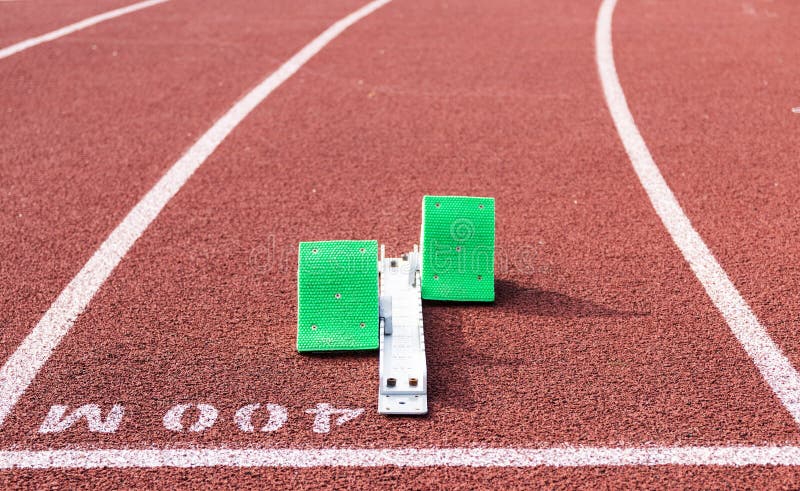

Find your strong foot: it's the foot you kick a ball with. Stamp on them to embed them into the track to prevent slipping. Put your heel on the inner edge of the start line. To begin, place the starting blocks one-foot length from the starting line. Make sure this set-up is comfortable for you to take off of by doing practice starts. Face the opposite way that you are going to run. Align the blocks in the direction of the sprint start in your lane. Previously, athletes dug holes in the track in order to gain footholds. So, what’s the secret to a powerful and fast start It all comes down to the starting blocks. The first use of starting blocks for Summer Olympic track events was in 1948 in London. But, a good start makes all the difference. Step 2: Position the front block two foot-lengths behind the start line. (Make sure that the blocks are pointing straight down the track).

This will be how your starting blocks will be set up for the race. 3 Track & Field Block Start Drills to Become a Better Sprinter As a sprinter, speed is important. Step 1: Place the starting blocks one foot-length behind the start line.

The same thing goes for if your left leg comes out first, but on this part you are placing the left block. Place the end of the block where the end of your hand is. For setting up the right block (if your right foot is the one that comes out first), use two feet and one hand to measure the distance between the end of the starting line and the right block.
USING TRACK STARTING BLOCKS HOW TO
If you want more information on how to get a great start with starting blocks, read The Rocket.
USING TRACK STARTING BLOCKS FULL
Normally, I need a whole hour or 90 minutes to critique a full starting block analysis. As always, I try to keep my videos under 10 minutes. Here is a sample analysis of a sprinter using starting blocks. Put the end of the block right where the end of your hand is. How to Use Starting Blocks: Case Study 1. The same goes for if your right foot is closest to the starting line, but it would be the right block that you are measuring. If the foot that is closest to the starting line, or the less dominant foot, is your left foot, then, measuring from the front of the starting line, use one of your feet and one of your hands to measure where you left block will be. See the "finding your dominant foot" section on this page if you haven't already. Next, for setting up the blocks themselves, use your feet and hands as a measuring device once again. The white line and the end of you blocks will be one of your foot length away from each other. Use your foot as a measuring device and put one end of your foot on the front of the white starting line and the other end of your foot on the end on the thick part of your starting blocks. Once you get your blocks, the first thing you want to do is place them on the track so that they are perfectly straight with the white lines. Setting up starting blocks correctly may bring your third place up to first place.


 0 kommentar(er)
0 kommentar(er)
